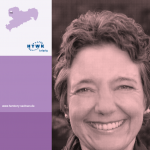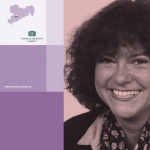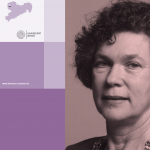
Mathematician and desert explorer
Maria Reiche
Maria Reiche risked her life for her major research project. At the age of 52, she had herself tied to the skids of a helicopter in order to photograph the famous Nazca Lines in Peru from the air. Her scientific career began at Dresden College of Technology. From a young age, Maria Reiche was fascinated by the travelogues in her father’s library. After graduating from high school, she enrolled at Dresden College of Technology. She studied mathematics, physics, geography, philosophy and teacher-training, and gradu

ated in 1928. However, being a supply teacher wasn’t enough for Maria Reiche. In search of more, she applied for a job as a private tutor for the children of the German consul in the city of Cusco in Peru. She had long been fascinated by the ancient cultures of South America. While helping to restore historical textiles at the National Museum in Lima, the capital of Peru, Maria Reiche first heard about the famous Nazca Lines discovered in 1924 – vast images in the desert sand up to 20 kilometres long. In 1941, equipped with a compass and a measuring tape, Maria Reiche set off into the desert for the first time to sketch the lines.


It turned out that they actually depicted figures, such as spiders, monkeys and birds. In 1950, Maria Reiche took up residence in an isolated, austere hut in the desert to devote herself entirely to studying the enigmatic drawings. Her bold aerial photographs made Maria Reiche world-famous. Even when she was confined to a wheelchair, she continued to dedicate herself to her work, partly with the support of her partner Amy Meredith. Maria Reiche conjectured that the lines made up a sort of calendar, the figures representing constellations. After the Nazca Lines had become a tourist attraction in the 1970s, Maria Reiche campaigned for them to be inscribed on the UNESCO World Heritage List in 1994. Dresden University of Technology has introduced the Maria Reiche Programme to support junior female academics working towards a professorship.
Fotonachweis: Archiv Maria Reiche (1, 3, 6); Mitteldeutscher Verlag Halle (2); Technische Universität Dresden, Universitätsarchiv (4); Annika Schulz (5)
Renate Lieckfeldt 1965–2013 “Higher education means passion!” declared Renate Lieckfeldt ardently at the start…
Ausstellungseröffnung #herstory – Sachsen und seine Akademikerinnen Im Tietz der Stadt…
Marketing researcher and first woman at the helm of a university Cornelia Zanger Cornelia Zanger…
Physician and first female rector Beate A. Schücking After a long career in…








